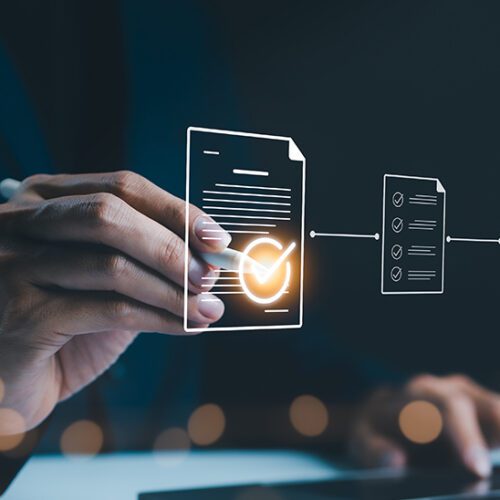The traditional CLM is dead. Here’s what comes next.
While traditional CLMs focused on digitising manual processes and newer AI tools centre on efficiency gains, Luminance takes a different approach. A cognitive infrastructure that doesn’t just automate, but truly understands and acts.

By Eleanor Lightbody, CEO
As we close out 2025, I’ve been reflecting on how much has changed in legal tech. And how much hasn’t. The capabilities on offer have evolved dramatically, but the conversation still feels narrow. We hear endlessly about time and cost savings, which are good things, yes, but they’re just the beginning.
For the past decade, the technology available to in-house legal teams has been dominated by Contract Lifecycle Management systems (CLMs) that promised automation but, in reality, just digitised old processes. They gave you dashboards, workflows, and checklists, but still relied on armies of humans to read, draft, and negotiate contracts.
Then came the post-ChatGPT wave. A new generation of providers emerged, and suddenly “AI for legal” was everywhere, coupled with an influx of investment and deal activity. These companies have started to fill the gaps traditional CLMs promised to fix. Legal teams can move faster, reduce human error, and unlock productivity gains that once felt impossible. It’s been exciting to watch, but even now, the discussion still orbits around efficiency: shaving hours and cutting costs.
That’s fine, but it’s incremental. The bigger opportunity lies not in making humans faster, but in unlocking what humans, even at scale, could never accomplish on their own.
At Luminance, that’s been our obsession. We’re not another CLM. Time and cost savings are part of what we offer, but they’re not the most powerful aspect of this technology.
We’ve built a cognitive infrastructure for enterprises: a muti-agent system that doesn’t just store or track contracts, but actually thinks, acts, and works alongside people. Under the hood, it fuses large language models with proprietary reasoning engines and contextual learning loops. The result isn’t just automation. It’s cognition.
That means our AI can interpret a clause, understand its commercial and legal implications, and act on it—not just in isolation, but in context. Whether it’s a new tariff, a shifting ESG regulation, or a sudden change in supply chain policy, Luminance continuously monitor a company’s entire contract portfolio and trusted third-party sources, from government updates to regulatory announcements. It then maps this intelligence onto your contracts to instantly highlight risk and recommend tailored mitigation strategies. In other words, the AI understands how external developments impact your obligations and business. Before you do.
Other AI systems depend on humans to tag data, trigger workflows, or approve drafts. Luminance reverses that. It can redline, propose new language, and learn from every negotiation: all autonomously. No manual triggers. No waiting for instruction. The machine understands first, and humans stay in the loop only for judgment and strategy.
Imagine being able to:
- See the ripple before it happens: When rules shift or tariffs spike, Luminance models the impact across your contracts, showing exactly where to renegotiate before risk hits.
- Negotiate with the context of every deal ever done: Learn from every past contract and use that insight to guide your next negotiation, surfacing optimal language and predicting counterparty moves.
- Make enterprise decisions in seconds: Ask, “Can we take on this supplier?” and get an answer grounded in every obligation, agreement and negotiation your company has ever done. Along with external developments, like new sanctions or trade restrictions, that could affect their eligibility.
And because Luminance is document-agnostic, the same system that understands an NDA can also reason over an M&A agreement, a policy document, or a supplier contract. Every document tells a piece of the story: about how you hire, sell, acquire, manage risk, and build relationships. In aggregate, they paint a picture of how your business actually runs.
That’s the power of an AI-driven cognitive infrastructure. It weaves every agreement, policy, and clause into a single, actionable intelligence layer across the enterprise. And those documents don’t exist in a vacuum. They’re constantly shaped by outside forces, from changing laws to evolving market dynamics. The ability to connect that external intelligence to internal obligations is what transforms static information into strategic foresight.
This isn’t just about automating legal work. It’s about rethinking how decisions get made across an organization. As an industry, we have an opportunity to broaden our thinking, moving beyond speed and efficiency to explore what AI can truly enable.
Because the next competitive advantage won’t come from just being faster. It will come from being smarter.




